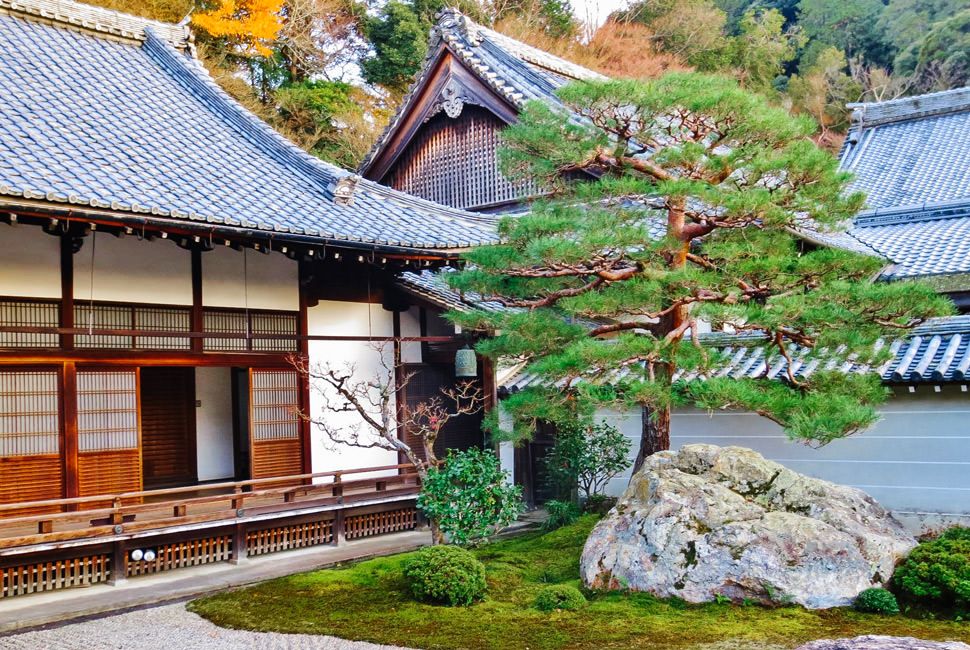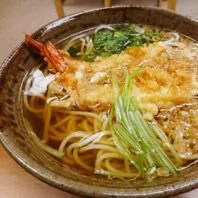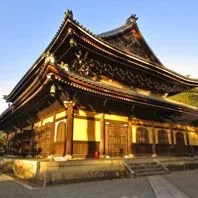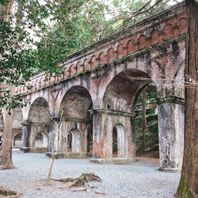Just by coincidence, I arrived in Kyoto two days after the anniversary of the attacks at Pearl Harbor. Despite once headlining the list of cities on which the United States intended to drop an atomic bomb, Kyoto was ultimately replaced by Nagasaki at the request of then-Secretary of War Henry Stimson, who, through his honeymoon and subsequent diplomatic visits, had taken a liking to Kyoto and its culture.
As a result, although a few air raids scratched the surface of the city, Kyoto emerged from World War II mostly intact. As the former imperial capital of Japan, the city is filled with more than 1,600 Buddhist temples, hundreds of Shinto Shrines, and has a restricted skyline dominated by imperial architecture — a quality that’s all but lost in Japan’s new capital, Tokyo.
Once on the ground in Kyoto, you should be ready for two things: to remove your shoes frequently, and to return your fair share of bows. Shoes are prohibited inside temples, shrines, and many restaurants, and to greet someone properly, you should bend at the waist and lower your head. The deeper the bow, the more respect shown. These rituals present themselves throughout the entire country, but Kyoto has a special knack for making them feel traditional thanks to its storybook scenery: cherry blossoms, trickling streams, bamboo forests and ridiculous fall foliage. In that sense, traditional and modern Japanese lifestyles are abuzz harmoniously in Kyoto, a city that stays true to its village roots.
Sticker Shock, Japan-Style
Many foreign travelers balk at Japan’s high cost of living, and there’s no question that when it comes to Asia, it’s one of the most expensive countries. Foreigner-only discounts on transportation help to ease the pain, but the real remedy rests in appreciating all that comes along with the sticker shock. Japan is impressively clean and well groomed, with a large emphasis on relaxing, peaceful environments centered around gardens, beautiful shrines, and temples. This, combined with an orderly, non-abrasive, overly polite population, results in a vibe that makes you forget about the few extra yen spent here and there.
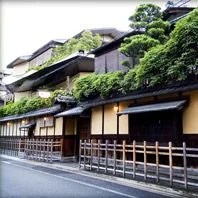
Where to Stay
Japanese guesthouses, known as ryokans, are found throughout the city. There are many different styles — traditional, modern, luxury — and, like hostels and guesthouses in the West, you always get what you pay for. Traditional ryokans are intended to preserve the culture of the Edo period, complete with tatami mats for sleeping and communal garden areas; the more luxurious ryokans offer better accommodations, high-quality meals, and more privacy. Browse around and find one that fits your tastes, whether it be in the city or the foothills. Boutique hotels are also plentiful, as are modern international options, such as the Hyatt Regency Kyoto and the Ritz Carlton Kyoto.
